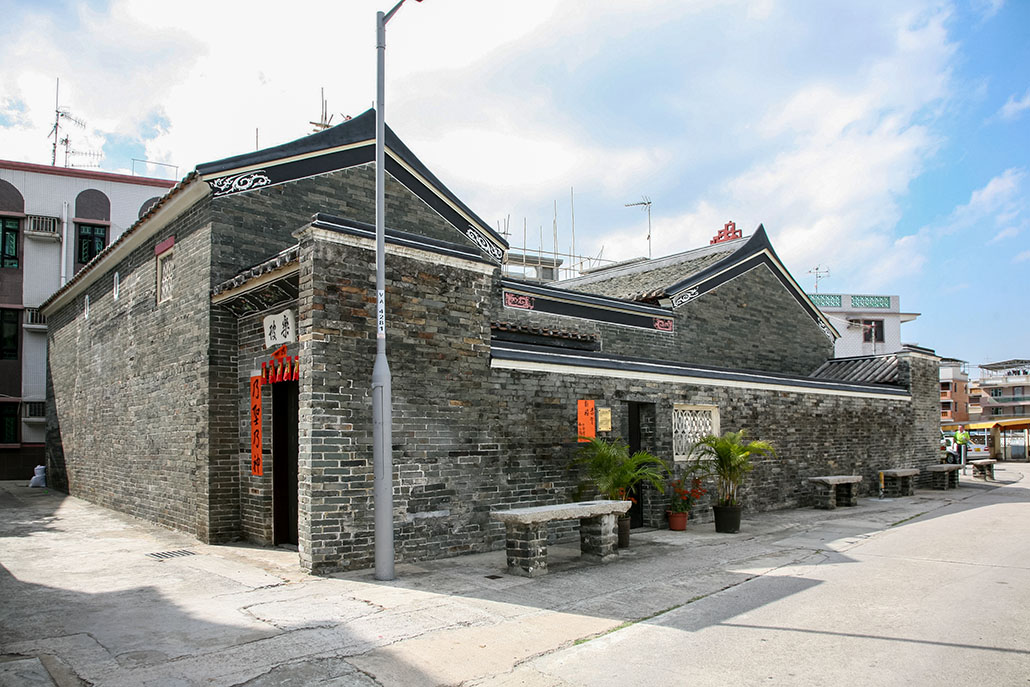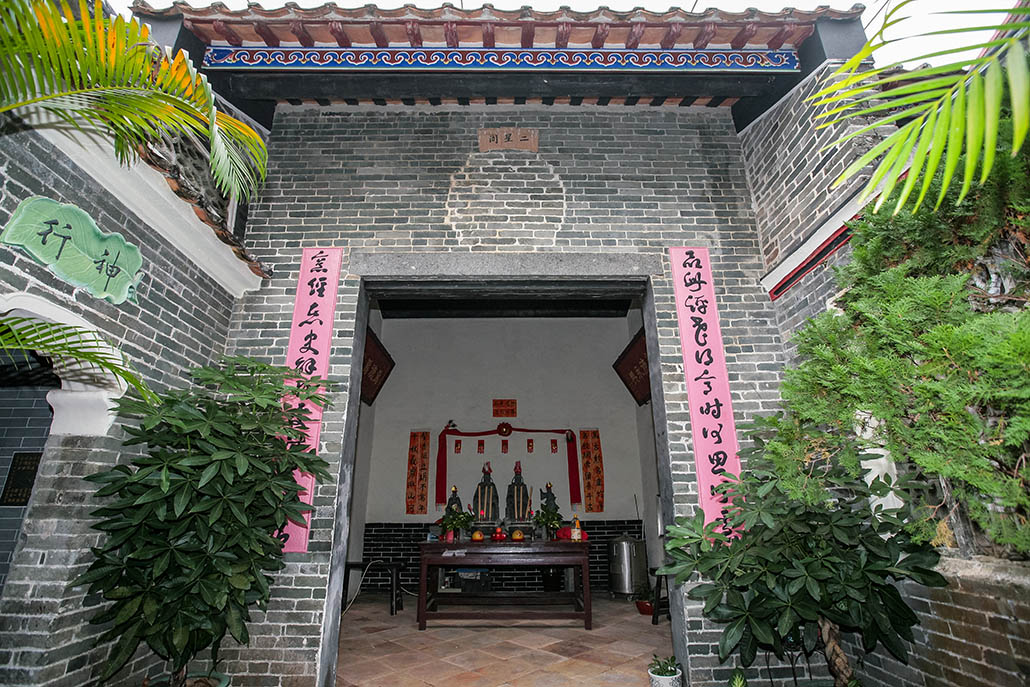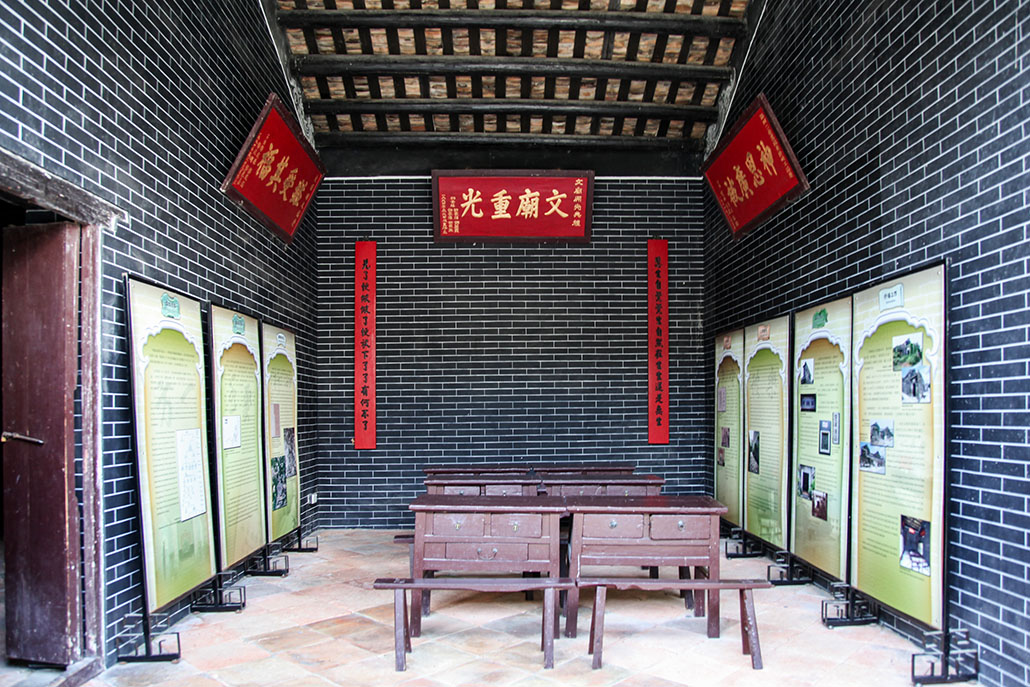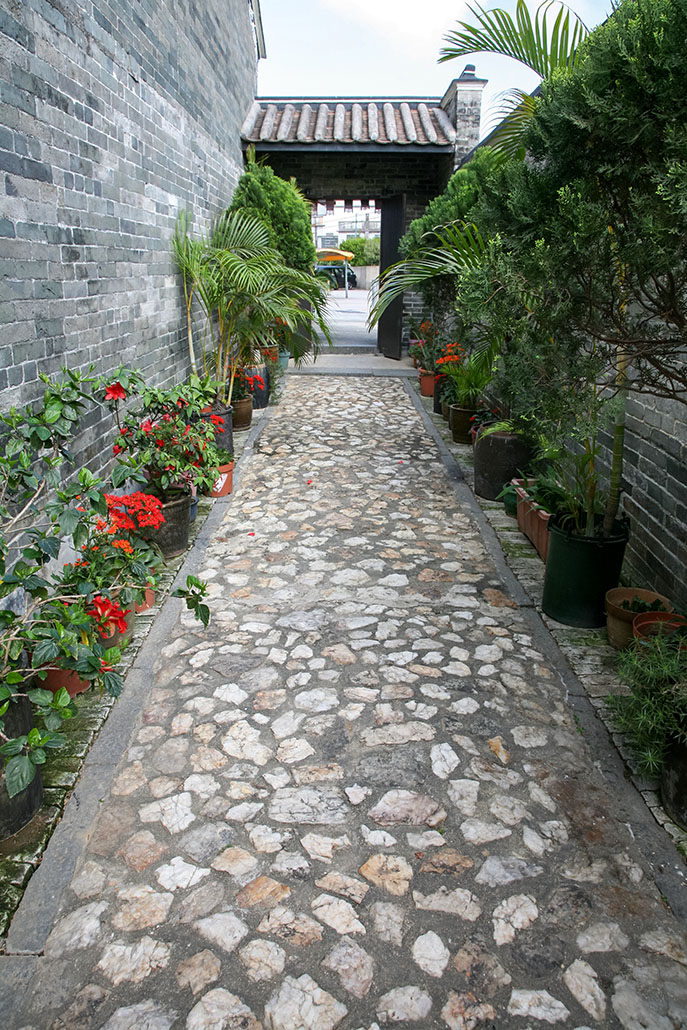Located in Shui Tau Village, Kam Tin, Yuen Long, Yi Tai Study Hall is said to have been built with funds donated by Tang Yi Tai Wui, a group of Tang scholars and village gentry, during the reign of Daoguang of Qing dynasty (1821–1850). The Tang clan has a long tradition of upholding culture and education as well as operating study halls. According to Xin’an Xianzhi (Gazetteer of Xin’an County), as early as Song dynasty, Tang Fu-hip, the fourth generation ancestor of the lineage in Guangdong, established Lik Ying Study Hall. Since the Imperial Civil Service Examinations was the main way for students to enter officialdom, and clans flourished in Ming and Qing dynasties, local clans were keen to honour their family and strengthen their influence with achievements in the Imperial Civil Service Examinations. The Tang clan in Kam Tin thus built a five-storey Man Cheong Pagoda between Shui Tau Village and Shui Mei Village, where Man Cheong and Kwan Tai were worshipped in the hope that clansmen of Kam Tin would pass the Imperial Civil Service Examinations.
After the Man Cheong Pagoda was completed, many clansmen passed the Imperial Civil Service Examinations, including Tang Man-wai, Hong Kong’s first jinshi in Qing dynasty. But during the reign of Daogaung of Qing dynasty, a clan member damaged the pagoda; even the statues inside were dumped in the bushes. Therefore, 16 scholars in the clan formed Tang Yi Tai Wui and proposed the founding of Yi Tai Study Hall, which housed the statues of Man Cheong and Kwan Tai. This is how the study hall got its name. Young clansmen attended the study hall free of charge. They were taught the Thousand Character Classic, the Three Character Classic, as well as the Four Books and Five Classics by teachers hired locally or from Dongguan, Guangdong.
The study hall is an exemplar of Lingnan traditional architecture. Built with grey bricks, it has a two-hall-three-bay layout with a courtyard. The entrance of Yi Tai Study Hall is on its left side between the two halls. A boundary wall was built along the left side forming a lane which is paved with white stones and was thus named “Pak Shek Hong” (White Stone Lane). The students were, therefore, reputed as “Students of White Stone Lane". The statues of Man Cheong and Kwan Tai are worshipped in the main bay of the front hall, and lessons were conducted in the rear hall. The building’s decorations complement its function as a study hall. For instance, on the walls of the front hall entrance is a set of plaster couplets depicting carefree and contented students who are accustomed to studying.
In Qing dynasty, Yi Tai Study Hall was an important study hall in Kam Tin, with scholars often visiting to give lectures. In the early twentieth century, the government introduced modern education. The study hall was converted into a primary school and remained in operation until the Fall of Hong Kong in 1941, bearing witness to the development of education in the New Territories over almost a century.
Opening Hours:
Monday and Wednesday to Sunday: 9am - 1pm and 2pm - 5pm
Closed on Tuesdays (except public holidays), Christmas Day, Boxing Day, New Year's Day and the first three days of Chinese New Year
Address:
Shui Tau Village, Kam Tin, Yuen Long, New Territories.
Enquiry Hotline:
(852) 2208 4488





